Exploring the World of Low-Code and No-Code Development Platforms
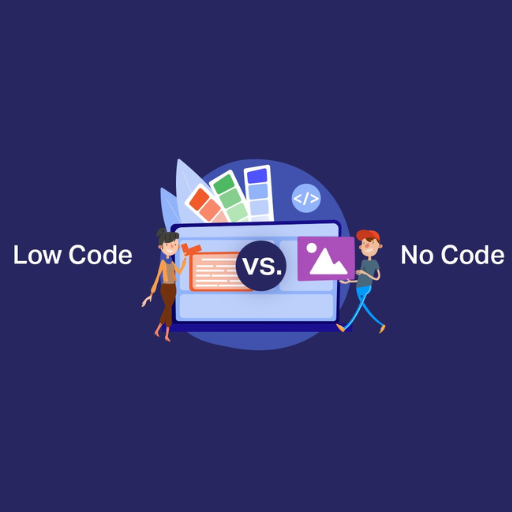
The advent of low-code and no-code platforms has substantially changed how individuals and companies handle software development. Such platforms allow average users without a technical background to build applications with simple point-and-click user interfaces. Using visual workflows, templates, and drag-and-drop features, they make development faster and encourage better innovation than conventional methods.
This blog post discusses the concepts of low-code and no-code platforms, along with distinguishing them from one another, exploring advantages across industries, and even spotlighting potential challenges. Moreover, we will look at how the tools are redefining the future of software development and what organizations are advised to think about in terms of adopting these solutions. Be it for you as an entrepreneur or a developer, or for someone who wishes to know about technologies grabbing headlines, this information is carefully orchestrated to navigate the low-code and no-code paradigm shift.
What is Low-Code Development and How Does it Work?
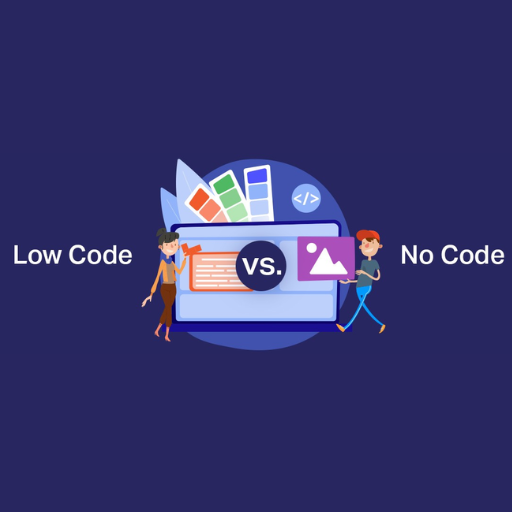
Low-code development is a type of software development that allows an individual to develop an application through a user-friendly interface instead of requiring extensive programming. With the use of a visual builder, low-code development can simplify the building of applications, which can be less technical in nature. Low-code platforms enable detailed automation of repetitive work, unification of several development tools, and visual representation of workflows, thereby improving accuracy and reducing complexity.
Understanding Low-Code Development
The core goal of low-code development is to help users create applications through visual aids and templates that require little to no programming skill. Users can create project timelines significantly quicker while enabling non-technical employees to actively take part in the process. Low-code development can effectively replace sophisticated coding because it automates monotonous tasks, illustrates workflows, integrates various processes, and lessens the technical barriers that come with traditional programming. Please, reach out to me with specific questions if you would like me to go deeper into any single topic within this context.
Benefits of Using Low-Code Platforms
As with anything, Low-code platforms come with pros and cons. In this case, we will note the advantages only.
- Lowered Overhead Construction Timeline
- Technical Perk: Enhanced development workflow efficiency (up to 70% less time spent, relatively speaking to traditional development methods) using pre-defined components and visual aid layout builders.
- Applicable to projects requiring fast-paced prototyping and accelerated time-to-market readiness.
- Non-Technical User Accessibility
- Technical Perk: A Lesser degree of advanced programming skill requirement due to the drag-and-drop coding interface and limited custom code scope.
- Enhances collaboration between technical and business teams, which leads to innovation.
- Curbing Expenses
- Technical Perk: Overall lower costs due to the necessity for fewer developers and shorter project timelines.
- Works best for small to medium-sized companies with constrained budgets.
- Dynamic Responsiveness For Scaling
- Technical Perk: Effortless expansion to meet demand with API and cloud service integration.
- Responsive to ever-changing business requirements.
- Reduced long-term Operational Cost Under Maintenance and Updates
- Technical Perk: Workflow and reusable components can be managed centrally, which makes updates and maintenance easier.
- Reduces operational burdens for maintaining the codebase.
By looking at time, cost, and integration capabilities, it is evident that low-code platforms provide valuable solutions modern application development. If you’d like me to elaborate on some of the technical details, do not hesitate to reach out!
How Low-Code Development Platforms Simplify Application Creation
Low-code application development platforms divide and conquer every aspect of the application’s lifecycle, from design, development, testing, and deployment. With guides that walk me through building apps using clicks instead of commands, low-code platforms allow me to drag-and-drop parts into position, assemble them into set modules, and set up new workflows with little to no programming expertise. Such methods greatly simplify app creation and greatly mitigate the need for resource-intensive development teams. The integration of collaboration, testing, and deployment tools further simplifies structural changes on existing applications while increasing the scale at which they can be used.
How Do No-Code Development Platforms Compare to Low-Code Platforms?
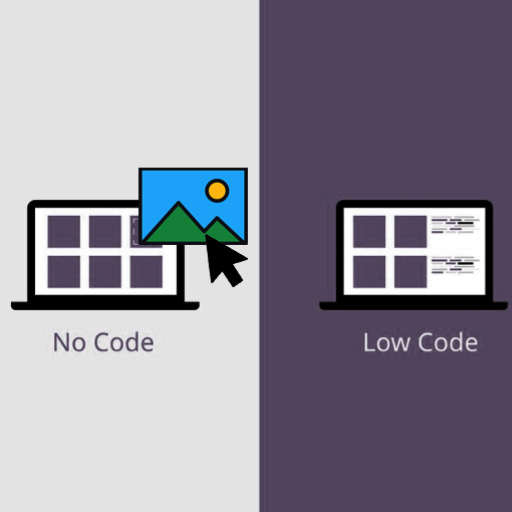
Although no-code development platforms can be beneficial for almost any type of user, they are especially valuable for those who lack any sort of technical training. This is because no-code platforms allow for the drag-and-drop construction of applications, which can easily be deployed. In contrast to no-code platforms, low-code systems require at least a little bit of coding knowledge for more sophisticated customizations. No-code frameworks are best for simple, smaller-scale projects that can be completed quickly without the help of IT professionals. Low-code solutions, on the other hand, provide more flexibility and are better suited for complex applications that must incorporate custom development along with pre-defined workflows. Although both platforms have the same goal of facilitating the development process, each focuses on different skill sets, each with its unique requirements.
Key Differences Between Low-Code and No-Code Development
While low-code and no-code platforms differ in their degree of technological sophistication, their singular aim is to make application development simpler. The differences include the following:
- Focus Users
- No Code: Intended for users with no technical background, including business analysts and citizen developers. These platforms have visual interfaces using drag-and-drop functionality, meaning little to no coding experience is necessary.
- Low Code: Best fit for people with some technical expertise. Although they provide visual instruments, low-code platforms allow for custom coding which results in more complex applications.
- Flexibility and Complexity
- No Code: Most suitable for simple use cases, such as internal dashboards, basic data tracking apps, or workflow automations. It does poorly when managing complex business logic or integrations.
- Low Code: Combines visual tools and manual coding resulting in the ability to build more sophisticated and scalable systems, such as enterprise grade software systems.
- Customization and Extensibility
- No Code: Provides very little customization, meaning users have to stick to the templates and frameworks of the platform.
- Low Code: Provides higher levels of customization. Functionality can be extended with additional custom code or third-party APIs.
- Development Delays
- Both platforms allow for fast application development, however, no code tools are usually faster when it comes to simple tasks. Custom development typically takes longer, but no-code is more efficient with straightforward requests.
- Integration Capabilities
- No-Code: Typically comes with automatic integrations for most common systems, although may have issues with unique or proprietary ones.
- Low-Code: Has advanced options for integrating legacy systems, various external APIs, and enterprise databases, which makes it more compatible.
- Technical Parameters
- No-Code:
- Learning Curve: No training required.
- Coding Required: No, none at all.
- Best For: Straightforward applications such as CRMs, reporting dashboards, and approval workflows.
- Low-Code:
- Learning Curve: Some training required.
- Coding Required: Some, ranging from low to mid-level, for example, JavaScript, Python, or SQL.
- Best For: Sophisticated logic, complicated applications, deep multi-system integrations, and requirements for scaling.
- Cost Considerations
- No-Code: Usually the most affordable option, which is a benefit for small to mid-sized enterprises, due to its ease of use.
- Low-Code: Significant upfront costs, which may be less advantageous for some, but considering the long-term flexibility and scalability, greater value is provided for larger organizations.
When to Choose Low-Code vs. No-Code
- Choose No-Code: If you do not have any coding knowledge on your team and want to make simple applications quickly without involving IT.
- Choose Low-Code: If you have technical employees on hand and want more tailored features, advanced integrations, or greater scaling potential for the project.
Both types of systems are good for speeding up workflows and easing the development processes, but recognizing their boundaries guarantees the right choice is made for specific requirements.
What Are the Benefits of Low-Code and No-Code Development?
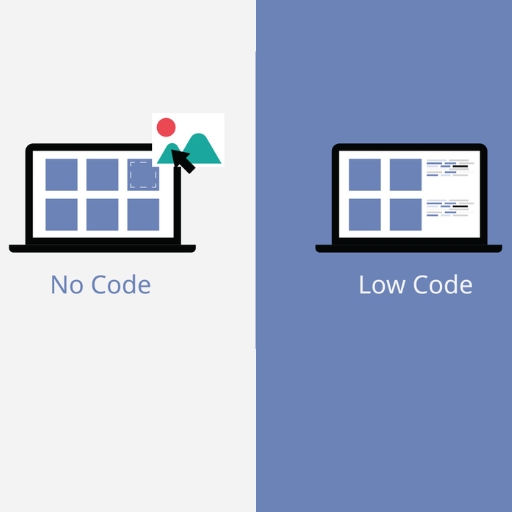
Low-code and no-code platforms offer numerous advantages that would ease application development:
- Increased Development Speed: Implementation of ideas is much faster as there is less time wasted on prototyping and deployment.
- Cost Efficient: Outsourcing or employing professional developers comes at a premium and minimal code based development saves businesses a substantial amount of money.
- Wider Range For Collaboration: Nontechnical users can contribute to inspiring ideas that improve overall teamwork and further drive development.
- Improved Team Collaboration: visual interfaces of such programs are user friendly which ensure that non technical users such as business stakeholders can seamlessly collaborate with the technical staff.
- Easily Changes and Updates: both platforms have ease of making changes and upgrades which can accommodate shifting business demands.
Use of the above factors would allow businesses to enhance their digital techniques, hence improving their position and competition in a changing market.
Empowering Business Users with No-Code Development
Developments in low and no-code technologies have also enabled citizen developers, who are essentially business users who do not need any technical skills to create applications, workflows, or any automations on their own. Such self-serve options permit users to resolve problems promptly while also fostering new ideas and creativity in the business. Below are brief answers to some of the most important points concerning no-code platforms alongside their corresponding technical parameters:
- Effortless Navigation
Key Point: Drag-and-drop functionalities, visual workflow interfaces, and other modules come equipped with templates that users can personalize through no-code platforms.
Technical Parameter: Guarantee usability for an interface/dashboard at the very least and strong core systems that are able to do modular works on the back-end.
- Rapid Prototyping and Deployment:
Key Point: Applications are designed, tested, and deployed within days, or in some cases, hours in comparison to the previous model of several months.
Technical Parameter: Able to provide fast iteration cycles, real-time preview capabilities, and automated deployment tools.
- Integration with Existing Systems
Key Point: Obtaining a network with other clients’ databases, as well as external third-party application products, such as another service, should integrate seamlessly.
Technical Parameter: Must possess automated APIs, prebuilt webhooks/xRM or shared connectors for other cloud-hosted ERPs or CRM applications.
- Security and Compliance
Key Point: Guarantees that sensitive information regarding business data will be secure across the entire application.
Technical Parameter: Role-based access, encryption, and other compliance mechanisms will be included within GDPR or HIPAA standards for private proprietary data.
- Scalability
Key Point: Supports the growth of the business by allowing for easy scaling of the applications.
Technical Parameters: Need to support high volumes of concurrent users, expand with flexible resource provisioning and cloud-based hosting, or adaptable control of large datasets.
With these features enabling business users to participate in development, no-code platforms cultivate innovation by bridging the divide between technical teams and business objectives.
How Low-Code and No-Code Tools Boost Efficiency
The acceleration of application development caused by low-code and no-code tools enhances efficiency across the board. The application development is so simplified that it can be completed by users with no technical or developmental background. Businesses can increase innovation and reduce development timelines by providing automation features, drag-and-drop user interfaces, and pre-built templates.
- Using these tools increases efficiency by:
Shortening Development Timelines
Key Benefits: Applications can be built in days or weeks instead of months.
Technical Parameter: Reusable components and visual development environments, alongside pre-built frameworks, accelerate processes.
- Collaboration Enhancement
Key Benefits: These platforms facilitate faster aligned communication between business users and IT members to make sure applications are business-centered.
Technical Parameter: Role-based access control, along with shared workspaces, enhances collaboration opportunities during application development.
- Cost Reduction
Key Benefits: Reduced expenditures for specialized developer hiring and for ongoing maintenance.
Technical Parameter: Hosted in the cloud, built-in automation reduces manual intervention and costs, and infrastructure self-evaluation adds value.
- Adaptable and Scalable
Key Benefits: Provides robust adaptability as per user demand.
Technical Parameter: Change in service level agreements, APIs, and existing system integration ensures measures are met.
The adoption of no-code and low-code solutions drives business productivity innovation at an unprecedented pace, profoundly impacting modern technology. Users with minimal technical skills can address emerging challenges while saving time and money thanks to the tools’ adaptability and user-friendliness.
Examples of Successful Low-Code App Development
In my research, I found that low-code platforms benefited a large number of organizations, like Volkswagen, for example. This global company was able to increase the speed of internal application development with the use of low-code tools. Another example is Unilever, which employed low-code solutions to digitize various parts of its supply chain. Not to be left out, AirAsia employed low-code technology to improve the customer service systems and rapidly deploy applications right when they were needed. All of these examples emphasize the ability that low-code platforms provide businesses with by allowing them to innovate, scale, and adapt in extremely agile market environments.
Who are Citizen Developers and How Do They Use Low-Code Platforms?
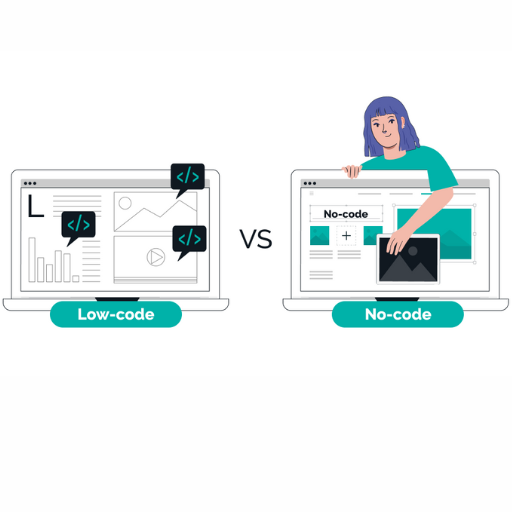
A citizen developer is someone who works within an organization and has limited technical knowledge. Using low-code platforms that require little to no coding skills, they can create applications. Automation of workflows, data management, or customer interactions is a few business needs that can be addressed using intuitive drag-and-drop interfaces and templated visuals. Encouraging employees to come up with solutions on their own improves innovation greatly, and reliance on IT teams is significantly reduced.
Defining the Role of Citizen Developers
My role as a citizen developer involves enabling users to solve business challenges without requiring advanced technical skills using low-code or no-code options. The tools at my disposal allow me to create applications as well as manage data and automate workflows. With the resources available to me, I am able to liaise with the IT teams whenever it is necessary while coming up with unique solutions that optimize processes and stimulate growth.
How Citizen Developers Innovate with Development Platforms
A citizen developer is someone who innovates based on user-friendly interfaces and templates, constructing complex applications without abundant technical knowledge. Such platforms allow individuals to accelerate processes, including building custom applications to solve organizational problems on short notice. The first 3 ways they innovate include:
- App Construction: A process where applications automatically deploy from workflows using drag-and-drop builders and available templates.
- Processable Automation: The time-saving process of workflow automation with tools such as Microsoft Power Automate and Zapier.
- Integrated Data Tools: Advanced practical tools for organized data reporting, storage, and visualization.
- Synthesizing: Enabling data flow by linking systems through APIs or connections to other programs.
- Iterative Testing and Prototyping: Applying frequent advanced polishes made possible by versioning controls available on the platform.
- Cross-team Collaboration: Working with other IT groups to ensure compliance, security, scalability, and regulatory obligations are met.
Citizen developers, without limit in imagination, as they focus on responsive time, data throughput, information redundancy, and amount of users, can build dependable, resilient systems enabled to scale and perform under heavy use.
What Does the Future of Low-Code and No-Code Development Look Like?
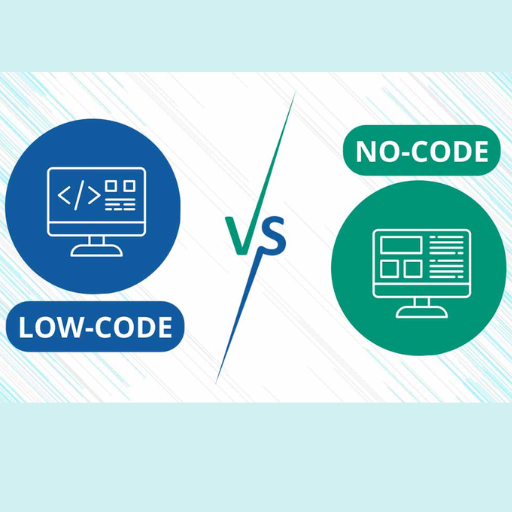
The outlook for low-code or no-code development platforms shows promise in innovation, accessibility, and collaboration. With the increasing use of artificial intelligence and machine learning, these non-technical platforms will enable users to solve unique business challenges and automate complex workflows. Additionally, many organizations will begin adapting these tools for agile citizen prototyping and scale up transformative innovation agility by fostering collaboration between non-technical employee developers and IT experts. Low-code and no-code platforms will help deploy specialized tools that self-enhance security and compliance, empowering virtually any user to construct powerful solutions needing little technical knowledge, transforming countless industries in the process.
Trends in Low-Code and No-Code Development
The latest waves of change, including operational speed, innovation, and agility, have made low-code or no-code solutions critical assets in software development. Here are some trends that stand out within these tools.
- AI Integration and Automation
AI is becoming incorporated in low-code and no-code platforms, increasing the level of efficiency and ease of use. Features such as predictive analytics tools and automated code suggestions are streamlining the workflow to enable smarter application development. These no-code tools also assist in building chatbots, machine learning frameworks, and do natural language processing (NLP) chatbots, which makes solutions easier to create for those who don’t know coding.
- Multi-experience Development Focused
It is now possible to develop applications that are mobile, web, voice, or even upgradeable for wearables. Most new inviting low-code platforms now have drag-and-drop blocks and templates meant for cross-platform use. Also, as important responsive UI frameworks and APIs for device tend to be driving factors that unlock the potential to reach these goals.
- Improved Cooperation Between Business and IT
With the advent of low-code development, there is increased cooperation between IT and business units. Teams are now using solutions with built-in communication and project management tools that allow them to create their own solutions more readily. Such customizable solutions are RBAC (Role Based Access Control) compliant, and thus secure, protecting users as well as the system from misuse or abuse.
- Growth of Cloud-Native and SaaS
The widespread usage of cloud infrastructure is driving the adoption of low-code and no-code solutions for cloud-native frameworks with microservices and containerization support. Containerization of popular platforms with AWS, Azure, and Google Cloud permits hassle-free deployment of scalable applications by teams. Modern low-code solutions are now almost guaranteed to include unsupported parameters like Kubernetes, serverless computing, and others.
- Increase in attention to Cybersecurity and Compliance Standards
Cybersecurity is one of the growing concerns of low-code platforms. Compliance enclosed in the platform itself, like GDPR, HIPAA, and SOC 2 compliances take care that an organization is working as per the Industry Standards. Technical compliance provisions such as, role based encryption of data, multi factor authentication (MFA), and application vulnerability scanning are essential features aimed at providing trusted low-code applications.
The trends depict that low-code and no-code tools are transforming the entire development ecosystem into a more democratized and efficient space by broadening the possibilities in application design. These tools will undoubtedly change how organizations think about software development in the coming years.
Impact of Low-Code and No-Code on Software Development
The introduction of low-code and no-code platforms has had profound impacts on software development as a whole. In my opinion, these tools assist developers and non-developers in building applications with greater speed and efficiency. The automation of workflows and the availability of ready-made components accelerate processes, resulting in faster time-to-market. Northwest Evaluation Association (NWEA) states that the use of these platforms promotes increased agility and helps with business scalability, enabling a swift response to rapid shifts. Alskgsose, security and governance challenges remain a concern as these platforms become more accessible.
The Role of Low-Code and No-Code Platforms in Digital Transformation
The use of low-code and no-code platforms is essential in optimizing the process of digital transformation, as these platforms allow users to create high-impact applications without the need for extensive coding skills. These platforms enable collaboration and work among technical and non-technical personnel, which helps in faster project delivery and less reliance on IT personnel. The main structure functionalities range from simple onboard interfaces, drag and drop functionalities, integration with other systems like APIs, CRMs, Databases, Solutions, Business Security, compliance, protection, and data fortification. These need to be ensured to protect overall business data security. Protective layers and encryption methods that use approved frameworks also need to be guaranteed. On top of that, scalability has to be fulfilled, which is provided by cloud deployment solutions. In our observation, the change in work processes proves useful in creating innovation brought about within business structures.
References
- Blaze.tech: 15 Best No-Code/Low-Code Platforms (2025) - A detailed overview of the top tools for 2025, including features, pricing, and ideal users.
- NocoBase - An open-source, self-hosted, and lightweight no-code/low-code development platform.
- The CTO Club: 20 Best Low-Code Platforms for Building Applications - A comprehensive list of the best platforms for various use cases.
Frequently Asked Questions (FAQ)
Q: What are low-code and no-code development platforms?
A: Low-code and no-code development platforms are tools that allow users to build applications with minimal or no coding knowledge. These platforms provide visual interfaces and drag-and-drop functionalities to simplify the application development process, making it accessible to both professional developers and non-developers.
Q: How do low-code platforms differ from traditional development?
A: Traditional development typically involves writing code line by line, which requires extensive coding knowledge and experience. In contrast, low-code platforms allow developers to use visual development tools to create applications quickly, reducing the need for detailed code writing and speeding up the development process.
Q: What are the benefits of low-code development?
A: The benefits of low-code development include faster application development, reduced costs, and increased accessibility for non-developers. These platforms make it easier to iterate and deploy applications, enabling rapid application development and allowing businesses to respond quickly to changing market needs.
Q: Can low-code and no-code platforms handle complex applications?
A: Yes, low-code and no-code platforms are capable of handling complex applications. While they are ideal for simple app development, many platforms offer advanced features that can support complex business logic and integrate with other systems, making them suitable for enterprise-level projects.
Q: How can one get started with low-code development?
A: To get started with low-code development, choose a platform that suits your needs, such as a mobile application builder or a web application development tool. Many platforms provide tutorials and resources to help users learn how to use low-code tools effectively, enabling them to start building applications quickly.
Q: What is the difference between low-code vs no-code approaches?
A: The primary difference between low-code and no-code approaches is the level of coding required. Low-code platforms require some coding knowledge for customization and complex integrations, while no-code platforms require no coding skills, focusing on user-friendly interfaces for application design.
Q: Are low-code and no-code options suitable for all businesses?
A: Low-code and no-code options are suitable for many businesses, especially those looking to speed up development work and reduce costs. However, for businesses with highly specialized or complex application needs, traditional development might still be necessary to achieve the desired level of customization and functionality.
Q: What are some examples of low-code development tools?
A: Examples of low-code development tools include platforms like OutSystems, Mendix, and Microsoft Power Apps. These tools offer a variety of features for application development, allowing users to build applications with minimal coding and deploy them across different environments.
Q: Do low-code platforms require specific skills?
A: Low-code platforms are designed to be accessible to users with varying levels of technical expertise. While some understanding of application development concepts can be beneficial, these platforms typically do not require extensive coding skills, making them accessible to a wider audience.